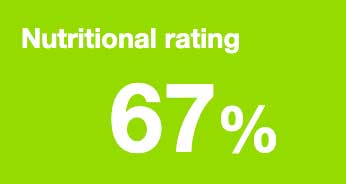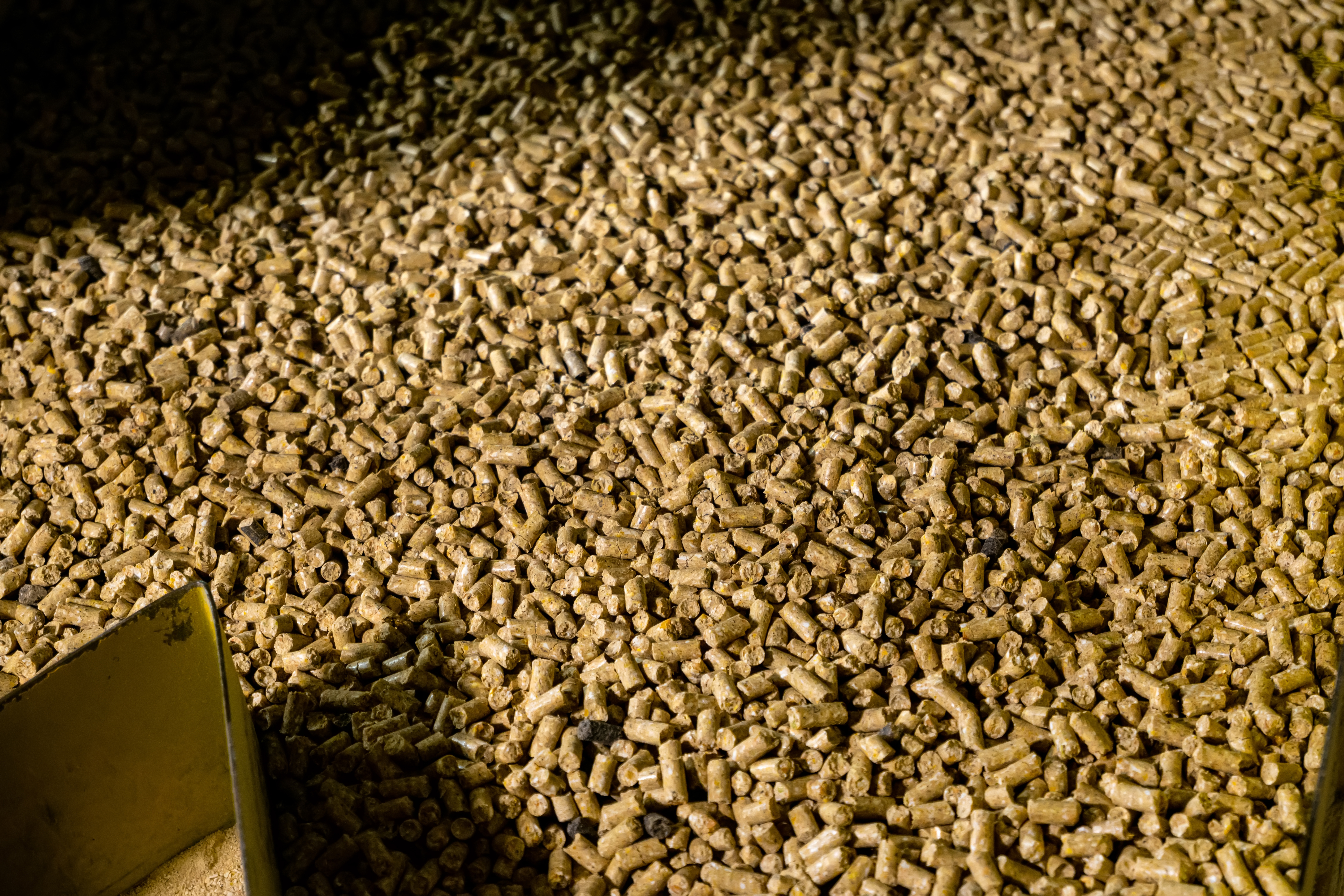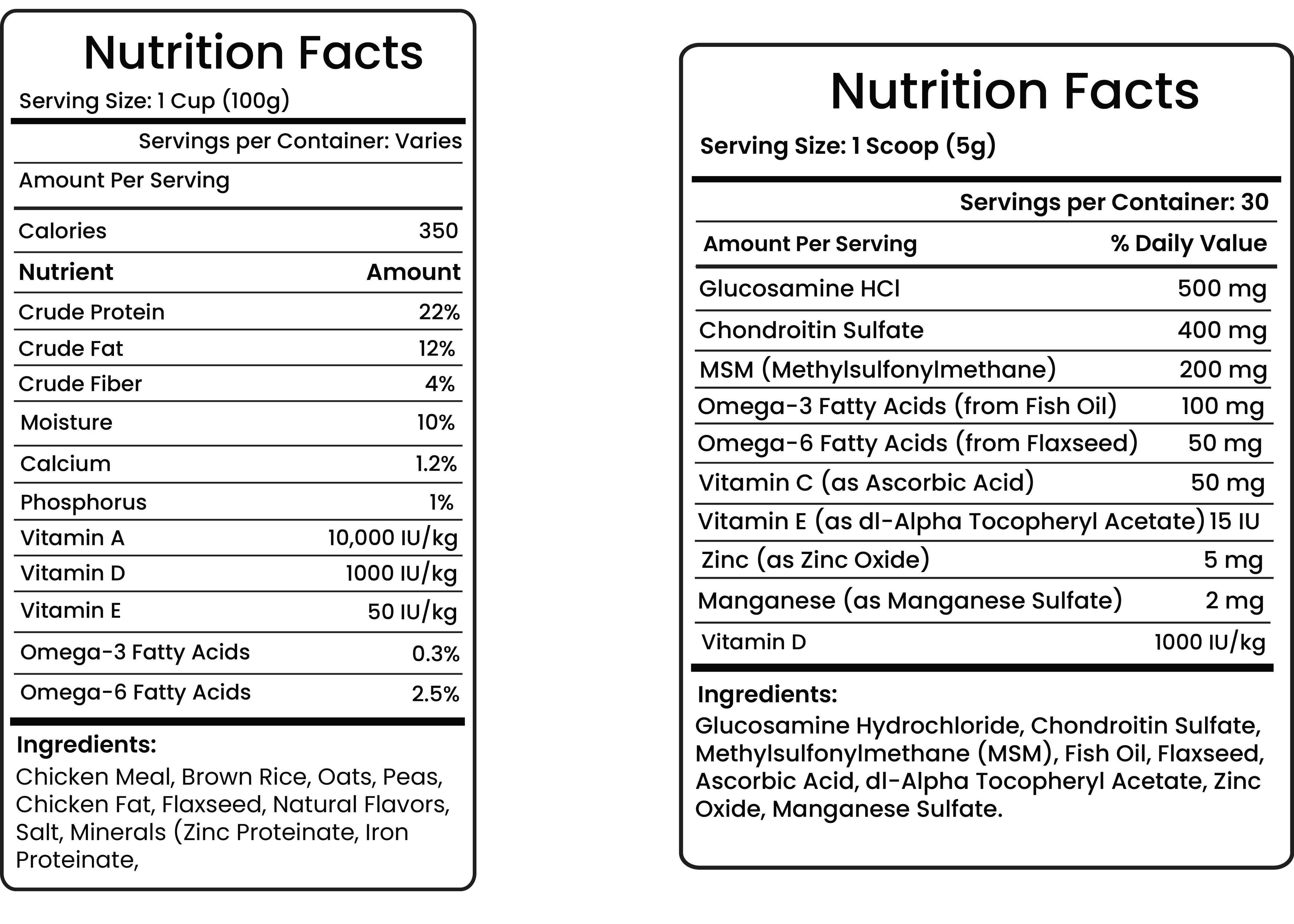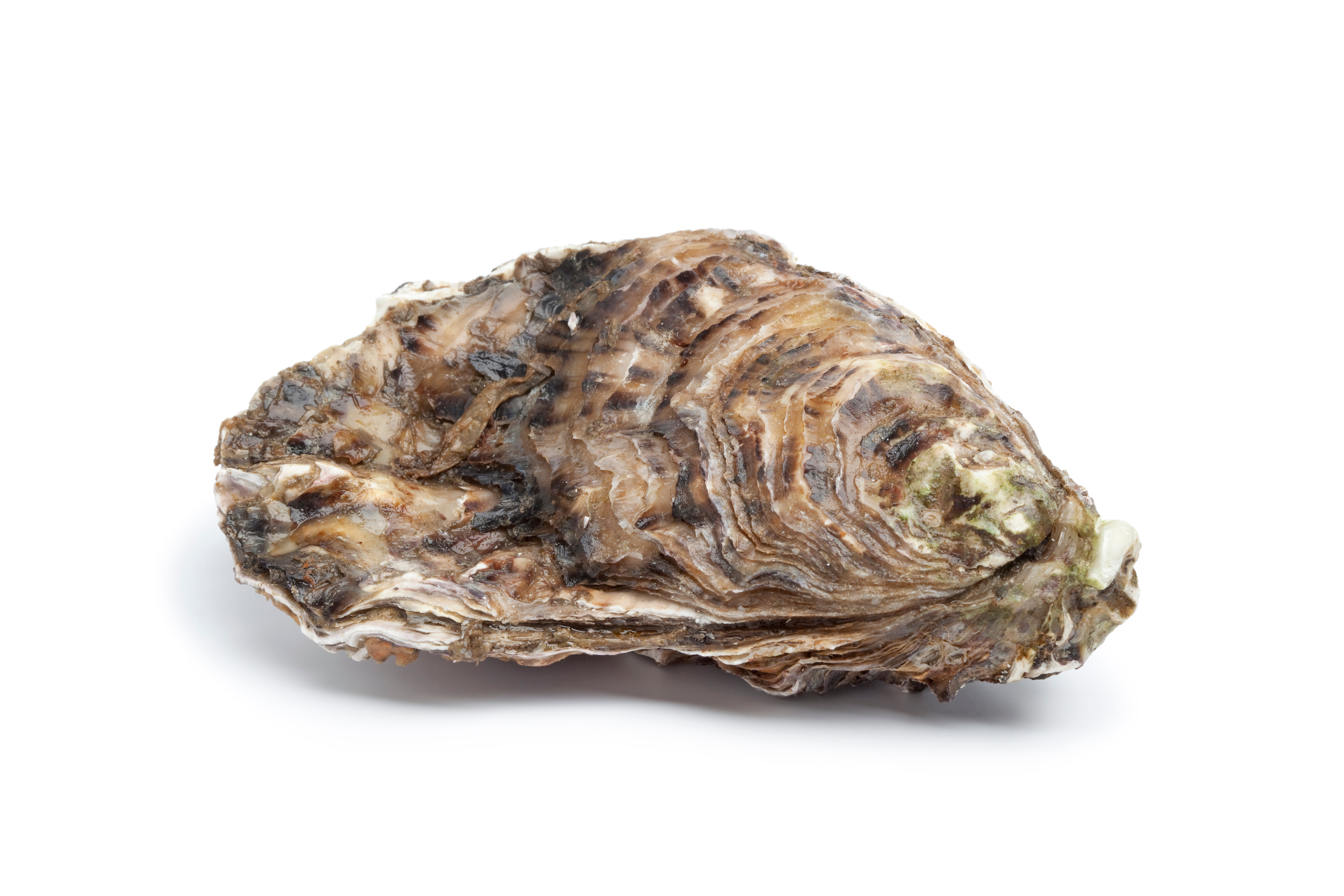Big Changes to the All About Dog Food Ratings
June 19, 2023 | By David Jackson
As you may have spotted, a lot of our product ratings have recently changed so in this post we'll look at what's changed and why.
What are the AADF ratings?
 One of the cornerstones AADF is our unique nutritional rating system. It's through these scores that we cut through all of the marketing nonsense and let you know how beneficial a food or treat is really likely to be for your dog. One of the cornerstones AADF is our unique nutritional rating system. It's through these scores that we cut through all of the marketing nonsense and let you know how beneficial a food or treat is really likely to be for your dog.
We take these rating scores very seriously and we're absolutely determined that they remain as accurate as possible as well as 100% impartial.
This is why we developed our very own data driven algorithm which examines each food in excruciating detail and ensures everything stays completely objective because every food goes through the exact same equation.
Why change the ratings?
 The science of canine nutrition is always advancing and we're always playing catch up - adding new ingredients to the database, recalibrating here and there in order to keep as up to date as possible. But every so often studies are published that significantly change our understanding of dog food and how it affects our pets. This is one of those times. The science of canine nutrition is always advancing and we're always playing catch up - adding new ingredients to the database, recalibrating here and there in order to keep as up to date as possible. But every so often studies are published that significantly change our understanding of dog food and how it affects our pets. This is one of those times.
What has changed?
1. Processing
 Time and time again studies are showing that highly processed foods are not as good for us or our pets as less processed foods. Time and time again studies are showing that highly processed foods are not as good for us or our pets as less processed foods.
We started factoring this into our scoring during the last big algorithm updates in 2018 but as more data has been published (you can find some of the key studies in the list of references below), it has become increasingly clear that we hadn't gone nearly far enough.
Our rating algorithm scores both the processing of the individual ingredients that go into the food AND the final processing method used to cook them or preserve the final product.
In terms of ingredients, the algorithm now puts a greater emphasis on whole, minimally processed ingredients and downgrades foods containing more processed forms that have been highly manipulated or gone through multiple stages of processing - ingredients like derivatives, isolates and synthesised ingredients.
We use the NOVA Food Classification System to help score ingredients based on their processing.
And on top of that, the algorithm also deducts points from those foods that have been subjected to intensive, high temperature final processing - the worst offenders being processes like extrusion which, in cases can reach temperatures upwards of 200 degrees c.
Both the temperature and the duration of processing can profoundly affect nutrient levels in a food - particularly certain vitamins, amino acids and essential oils. We have been talking with a wide number of manufacturers to get an accurate and up to date picture of the processes being used and have pawed through dozens of studies to see how those processes are likely to have affected the nutrients within the foods.
2. Label clarity
 Secondly we're taking a much stricter approach to labelling clarity. Secondly we're taking a much stricter approach to labelling clarity.
Obviously we can only make informed decisions about our dog's diet if we have all of the information we need - especially what ingredients are in a food and in what proportions. While we have always downgraded foods with missing info, now we're stepping things up.
So we will be deducting more points from foods with any vague ingredients such as "Meat and Animal Derivatives" and the more vague the ingredient, the more points will be lost.
We'll also be awarding more points to foods that declare their ingredient percentages because there's a big difference between "Beef and Chicken" and "Beef and Chicken 90% (Chicken with Bone 30%, Beef Tripe 20%, Beef Muscle Meat 15%, Beef Heart 10%, Beef Kidney 5%, Beef Liver 5%, Beef Trachea 3%, Beef Spleen 2%)". Also, the latter will score higher as it outlines details of offal, which is an excellent ingredient for dogs whereas the first example does not clarify if it contains offal- which people may need to know in order to make the right choice for their dog.
And while, in the past, we have allowed manufacturers to provide missing ingredient information directly to us in order to help with their scores, we will now require all info to be clearly declared on the product labels and/or website in order to affect the ratings.
We're hoping these changes will encourage manufacturers to be more transparent, and as they publish more information on their websites and labels we will update our info accordingly. So their rating, like always, can change and isn't permanent.
Numerous smaller updates
 As well as the two big changes above, we have also been working on a whole host of smaller updates - from minor calibration tweaks here and there to adding in all of the new ingredients that are just starting to appear in dog foods like restharrow root, oyster shell and birch bark - yes really! As well as the two big changes above, we have also been working on a whole host of smaller updates - from minor calibration tweaks here and there to adding in all of the new ingredients that are just starting to appear in dog foods like restharrow root, oyster shell and birch bark - yes really!
And we'll also be raising the bar across the board meaning pet foods have to work harder to get our top scores. We firmly belive that pet foods can and should continue to improve and we're sure the AADF rating algorithm can play a big part in making that happen.
Why has my dog food rating dropped so much?
 Almost all product ratings have dropped but some have dropped a lot further than others. This is not because the food itself has changed - it is because they way we rate foods has changed as we described above. The worst hit foods are those that are heavily processed (especially extruded foods) and do not declare a lot of individual ingredient percentages on their website/label. Almost all product ratings have dropped but some have dropped a lot further than others. This is not because the food itself has changed - it is because they way we rate foods has changed as we described above. The worst hit foods are those that are heavily processed (especially extruded foods) and do not declare a lot of individual ingredient percentages on their website/label.
Despite our rating changes, if your dog is doing well on any particular food and you are happy with it, there really is no need to make any changes.
The new scores are already live on the All About Dog Food directory so make sure you drop by and let us know how your favourite brand stacks up.
The changes so far only affect complete pet foods but we'll be rolling out to treats and complementary foods very soon - watch this space!
References
- Lee, S., Choi, Y., Jeong, H. S., Lee, J., & Sung, J. (2017). Effect of different cooking methods on the content of vitamins and true retention in selected vegetables. Food science and biotechnology, 27(2). Link
- Degradation of vitamins, probiotics and other active ingredients caused by exposure to heat, water and sunlight. Nutraceutical Business Review (2018). Link
- N.C. Igwemmar, S.A. Kolawole, I.A. Imran (2013). Effect Of Heating On Vitamin C Content Of Some
Selected Vegetables. International Journal of Scientific & Technology Research Volume 2, Issue 11. Link
- Tran, Quang & Hendriks, Wouter & Poel, Antonius. (2008). Effects of extrusion processing on nutrients in dry pet food. Journal of the Science of Food and Agriculture. 88. 1487-1493. 10.1002/jsfa.3247. Link
- Tran, Quang & Hendriks, W.H. & Poel, A.F.B.. (2011). Effects of drying temperature and time of a canine diet extruded with a 4 or 8 mm die on physical and nutritional quality indicators. Animal Feed Science and Technology. 165. 258-264. 10.1016/j.anifeedsci.2011.03.009. Link
- Q.D. Tran, W.H. Hendriks, A.F.B. van der Poel (2011). Effects of drying temperature and time of a canine diet extruded with a 4 or 8mm die on physical and nutritional quality indicators. Animal Feed Science and Technology, Volume 165, Issues 3-4. Link
- Lešková, Emília & Kubíková, Jana & Kováčiková, Eva & Košická, Martina & Porubska, Janka & Holčíková, Kristína. (2006). Vitamin losses: Retention during heat treatment and continual changes expressed by mathematical models. Journal of Food Composition and Analysis. 19. 252-276. 10.1016/j.jfca.2005.04.014. Link
- Khoonin, W., Shantavasinkul, P. C., Santivarangkna, C., & Trachootham, D. (2022). Loss of Eicosapentaenoic Acid (EPA) after Retort Sterilization of the EPA-BCAA Fortified Complete Nutrition Drink. Foods (Basel, Switzerland), 11(14), 2023. Link
- Taciak, M., Tuśnio, A., Święch, E., Barszcz, M., Staśkiewicz, Ł., Skomiał, J., Paradziej-Łukowicz, J., & Pastuszewska, B. (2015). Effects of Autoclaving Soy-Free and Soy-Containing Diets for Laboratory Rats on Protein and Energy Values Determined In Vitro and In Vivo. Journal of the American Association for Laboratory Animal Science : JAALAS, 54(5), 507-515.
- Tuśnio, A., Taciak, M., Barszcz, M., Paradziej-Łukowicz, J., Olędzka, I., Wiczkowski, W. ... Skomiał, J. (2014). Thermal sterilization affects the content of selected compounds in diets for laboratory animals. Journal of Animal and Feed Sciences, 23(4), 351-360. Link
- J.C. ANDERSON-HAFERMANN, Y. ZHANG, C.M. PARSONS. Effects of Processing on the Nutritional Quality of Canola Meal, Poultry Science, Volume 72, Issue 2, 1993. Link
|
Team AADF •one year ago
Hi Sue and Lorraine. Great question! We do indeed take that into account. All of the foods you mention (and many more besides) are actually made in the same factory in Lancashire called GA. According to a recent email we have from them the cooking temperature of their thermal twin extruder is actually 92 degrees c for 20 seconds which isn't bad at all. But that's just the second stage of four. The first stage, called pre-conditioning, is at 80 degrees for 4 minutes. Stage 3, pre-drying, is 4 minutes at 110 celsius and the final stage, main drying, last 15-60 minutes at 100-110 degrees c. It's also important to consider that many of the ingredients that go into dry foods have also gone through various stages of processing before they even reach the factorySue Williams •one year ago
Lorraine, I was going to ask exactly the same about Bentley’s Taste of the Ocean, also cooked at 82 degrees, as it’s dropped from 94% to 80% and for the life of me I can’t understand why! Please, AADF, let us know! ThanksLorraine Brown •one year ago
When you look at processing of dog food and downgrade food which is highly processed such as the extrusion method because of high temperatures involved, do you also take into consideration dried food which states that it uses gentler processing such as cooking at 82 degrees such as Eden or Grace dog foods?